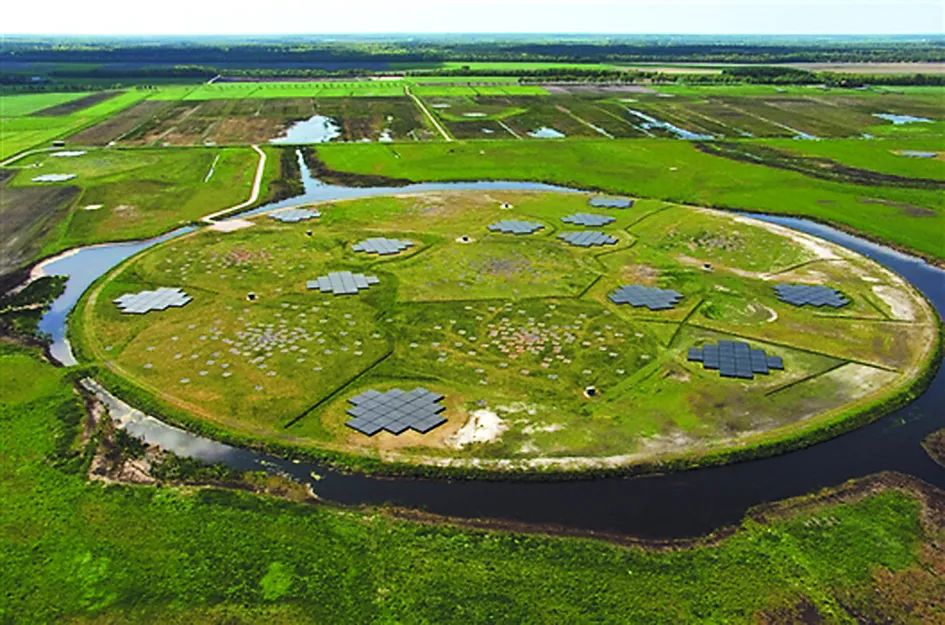The European laboratory is "hanging"!
Author:Journal of China Science Time:2022.09.13
Text | Wang Fang

The energy budget of the Dutch low -frequency arrays has reached the limit. Image source: lofar/Astron
According to "Science", soaring energy prices are hitting Europe. It is not only the family that feels pain, but also the research institute that runs huge computers, accelerators and laser beam lines is also struggling.
In December 2021, shortly after Jessica Dempsey became the director of the Dutch Institute of Astronomy (Astron), her attention had to change from a star to an electricity fee.
The low -frequency array (LOFAR) radio telescope operating by Astron depends on large computer clusters to process radio astronomical data. It consumes about 2,000 MW times a year, which is equivalent to 800 families for one year. This summer, when Dempsey tried to renew the ASTRON energy contract, she was shocked that the cost was twice as much as the cost in 2021.
In order to maintain Lofar's operation, Dempsey plans to seek emergency energy funding from the Dutch government; without funds, she may have to reduce scientific observation funds. She said: "If the price continues to rise, it will bring a crisis of survival."
The National Supercomputing Center in the Czech Republic was forced to run its most powerful supercomputers Karolina with a capacity of 1/3, which delayed the 1,500 users using the computer for climate modeling and drug development. The Czech International Laser Research Center with high -power laser beams has to suspend operation for several weeks.
The main reason for this crisis is the economic slowdown caused by the new crown epidemic. At the same time, the price of natural gas was insufficient to increase the price of natural gas from continental Europe to more than 10 times the average price of history.
Martin Freer, Dean of the Energy Research Institute of Birmingham University, said that if energy prices continue to soar this year, "the impact on science will be huge."
As of May, the Czech government has agreed to rescue the above two scientific facilities by the end of 2023, but their fate has been uncertain after that. On the one hand, Roman HV zda, deputy director of the International Laser Research Center, is worried about the natural gas needed by the building, and on the other hand, worrying about power supply for laser beams.
He said that if the power supply is restricted, the facility may have to close up to 6 months. This will not only hinder the experiments that hundreds of users are conducting, but also postpone future experiments. "So it is not actually 6 months, but 12 months or even 18 months."
Germany's largest accelerator center, German Electronic synchronization accelerator (Desy), also has similar concerns. Wim Leemans, the person in charge of the DESY accelerator project, said that the center has purchased enough energy in advance and can last until 2023. But if the German government implements national energy restrictions, Desy may not be able to use these energy sources.
Leemans said Desy is exploring the method of running machines with lower energy, so that it can continue to serve some users, but the two large linear accelerators and other devices have to be closed. "When we need innovation most, reducing operation will cause damage to some important studies."
The European Nuclear Research Center (CERN), located in Switzerland, is the world's largest particle physics laboratory, which is intensely focusing on the development of the energy crisis. CERN uses 1.3 tiles of energy each year. The agency purchased energy from France a few years in advance, but the problem is now the supplier.
The French energy sector may require CERN to be the most unstable when the power grid -usually do not run in the morning and evening. According to these requirements, CERN's data output may be significantly reduced. They have to turn off the smaller accelerator to complete the first task -maintaining the operation of the large -scale strong collision.
Scientists are currently unclear whether the government will use the operation of large laboratories to maintain large laboratories. Perhaps it will give priority to industrial companies, and smaller laboratories in universities can only die.
"China Science News" (2022-09-13 The 1st edition of the original title is "Research on the Energy Crisis Heavy Creation Science Research")
Edit | Zhao Lu
Capture | Zhihai

- END -
Tibetan green finance "green contains green volume" creates a record high
Recently, the reporter learned from the PICC Lhasa Middle Branch that in order to build an important ecological security barrier in the country and promote the construction of beautiful Tibet and the
please check!A large wave of tax and benefit policies are here

Since 2022, the country, Sichuan Province, and Chengdu have introduced a series of...